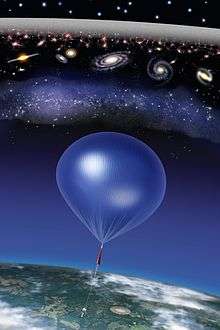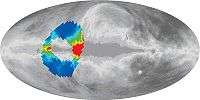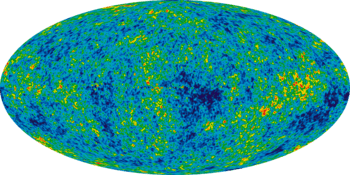ARCADE
 | |
| Telescope style | space program of the United States[*], radio telescope |
|---|---|
| Website |
asd |
Absolute Radiometer for Cosmology, Astrophysics, and Diffuse Emission (ARCADE) is a program which utilizes high-altitude balloon instrument package intended to measure the heating of the universe by the first stars and galaxies after the big bang and search for the signal of relic decay or annihilation. In July 2006 a strong residual radio source was found using the radiometer.[1]

ARCADE has been funded by the NASA's Science Mission Directorate under the Astronomy and Physics Research and Analysis Suborbital Investigation program. The program is composed of a team led by Alan Kogut of NASA's Goddard Space Flight Center. ARCADE was launched from NASA's Columbia Scientific Balloon Facility in Palestine, Texas, conducted under the auspices of the Balloon Program Office at Wallops Flight Facility. The balloon flew to an altitude of 120,000 feet (37 km), viewing about 7% of the sky during its observations.[2]
The instrument is designed to detect radiation at centimeter wavelengths.[3] The craft contained seven radiometers which were cooled to 2.7 K (−270.45 °C; −454.81 °F) using liquid helium, with the intent to measure temperature differences as small as 1/1000 of a degree against a background which is only 3 K (−270.15 °C; −454.27 °F).[4] The optics in the instrument package were placed near the top of the dewar flask which cooled them in order to prevent the instruments from seeing the walls of the container, thereby simplifying the processing of the observational data. This design choice necessitated the use of superfluid pumps in order to drench the radiometers in liquid helium. The design also utilized heaters in order to create a cloud of helium gas, in place of using a (relatively warm) window, which also simplified processing of the observational data.[5]
Residual emission
In 2011, the ARCADE 2 researchers reported, "Correcting for instrumental systematic errors in measurements such as ARCADE 2 is always a primary concern. We emphasize that we detect residual emission at 3 GHz with the ARCADE 2 data, but the result is also independently detected by a combination of low-frequency data and FIRAS."[6]
See also
| Wikimedia Commons has media related to ARCADE. |
References
- ↑ Das Universum hat uns aus der Bahn geworfen Archived March 31, 2009, at the Wayback Machine. (German)
- ↑ Reddy, Francis (January 7, 2009). "NASA Balloon Mission Tunes in to a Cosmic Radio Mystery". NASA.
- ↑ Kogut, A.; Fixsen, D; Fixsen, S; Levin, S; Limon, M; Lowe, L; Mirel, P; Seiffert, M; Singal, J; Lubin, P; Wollack, E (December 2006). "ARCADE: Absolute radiometer for cosmology, astrophysics, and diffuse emission". New Astronomy Reviews. 50 (11–12): 925–931. arXiv:astro-ph/0609373
 . Bibcode:2006NewAR..50..925K. doi:10.1016/j.newar.2006.09.023.
. Bibcode:2006NewAR..50..925K. doi:10.1016/j.newar.2006.09.023. - ↑ ARCADE Instrument Summary
- ↑ Stupid Dewar Tricks
- ↑ Seiffert, M.; Fixsen, D. J.; Kogut, A.; Levin, S. M.; Limon, M.; Lubin, P. M.; Mirel, P.; Singal, J.; Villela, T.; Wollack, E.; Wuensche, C. A. (10 June 2011). "Interpretation of the ARCADE 2 absolute sky brightness measurement" (PDF). The Astrophysical Journal. 734 (1): 6. Bibcode:2011ApJ...734....6S
 . doi:10.1088/0004-637x/734/1/6
. doi:10.1088/0004-637x/734/1/6 .
.
